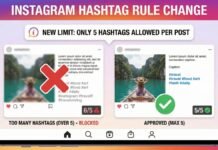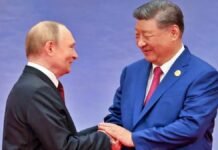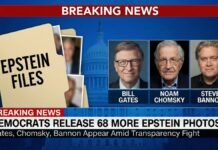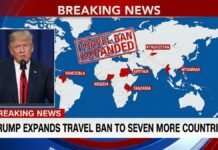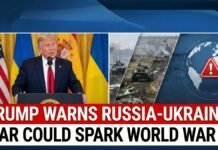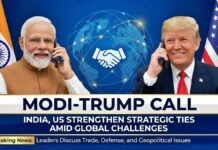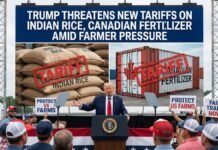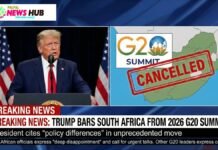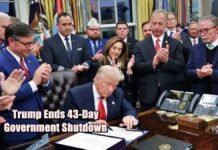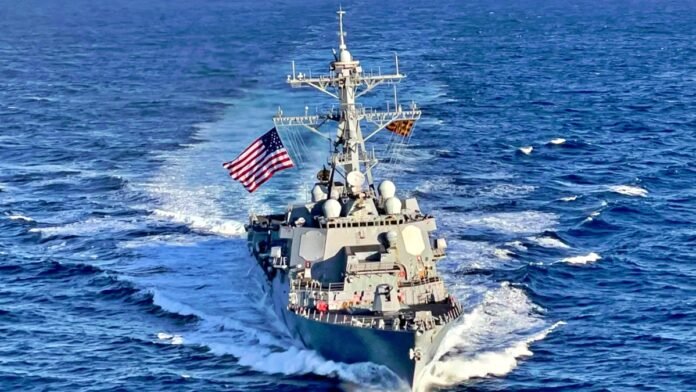
Key Points:
- Miami Herald report on October 31, 2025 claimed US had decided to attack Venezuelan military bases within hours or days, sparking global concerns
- Trump administration immediately denied the report as “fake news,” with Trump stating no final decision has been made and Secretary of State Marco Rubio calling sources “false”
- Over 10,000 US troops currently deployed in Caribbean region, including USS Iwo Jima with 1,600 Marines positioned less than 200 km from Venezuelan coast
- Target identified as Cartel de los Soles (Soles Cartel), allegedly responsible for smuggling 500 tons of cocaine annually to US and Europe
- US has conducted 15 airstrikes since September 2025, killing at least 61 people on suspected drug-smuggling vessels
- Trump formally declared “non-international armed conflict” with drug cartels on October 1, 2025, providing legal framework for military operations[1]
- Venezuelan military estimated at 125,000 troops, has moved forces to coast and called for mobilization amid invasion fears
New Delhi: A bombshell report published by the Miami Herald on October 31, 2025, has sent shockwaves through international diplomatic circles, claiming that the United States had decided to attack military installations inside Venezuela, with operations potentially beginning within hours or days. The report, citing sources familiar with the situation, alleged that the strikes would target facilities allegedly used by Venezuela’s Cartel de los Soles, a drug trafficking organization that US officials claim is operated by individuals close to President Nicolás Maduro.
Planned Operation Details and Objectives
According to the Miami Herald report, the proposed military operation would involve joint air and naval strikes targeting Venezuelan military bases, seaports, and cartel infrastructure allegedly used for smuggling drugs to Europe and the United States. The operation is designed to dismantle the command structure of Maduro’s Cartel de los Soles and target military facilities that protect the regime’s drug smuggling operations, according to sources familiar with the strategy obtained by multiple outlets.
US officials have accused the Cartel de los Soles of transporting approximately 500 tons of cocaine to the United States and Europe annually, collaborating with criminal organizations, including Venezuela’s Tren de Aragua gang and Mexico’s Sinaloa Cartel. The Miami Herald reported on October 2, 2025, that sources indicated the US effort had “effectively shut down” the busy “Caribbean route” for these estimated annual shipments.
The report dramatically claimed that “Maduro’s time is running out,” citing intelligence suggesting that some of his own generals have turned against him. One source told the Miami Herald: “Maduro is about to find himself trapped and might soon discover that he cannot flee the country even if he decided to. What’s worse for him, there is now more than one general willing to capture and hand him over, fully aware that one thing is to talk about death, and another to see it coming”.
Swift Administration Denial
The Trump administration moved quickly to dismiss the Miami Herald report as inaccurate. White House Deputy Press Secretary Anna Kelly issued a statement categorically denying the report, emphasizing that no decision can be made without President Trump’s explicit approval. Speaking to reporters aboard Air Force One on October 31, Trump himself stated that he has not yet made a definitive choice regarding the timing of potential strikes on Venezuelan territory.
Secretary of State Marco Rubio took to the social media platform X to directly challenge the report’s credibility, writing that “the Miami Herald has been misled by false sources”. Despite these official denials, the ongoing military buildup and activity in the Caribbean region have continued to fuel speculation about US intentions toward the Maduro regime.
Massive Military Buildup in the Caribbean
Regardless of the administration’s denials about imminent strikes, the US military presence in the Caribbean has grown substantially since late August 2025. According to reports as of October 28, 2025, approximately 10,000 US troops are currently deployed in the Southern Caribbean and Puerto Rico, with roughly half positioned in Puerto Rico and the other half on naval vessels.
The deployment includes the USS Iwo Jima amphibious assault ship carrying more than 1,600 Marines, positioned less than 200 kilometers (120 miles) off the coast of Venezuela and accompanied by two destroyers. The Gerald R. Ford aircraft carrier strike group, carrying approximately 4,000 personnel, is also en route to the region. US forces in the area include elements of the 160th Special Operations Aviation Regiment, which provides helicopter aviation support for special operations forces.
Newsweek reported on October 31 that US ships were positioned near the Venezuelan military base at La Orchila Island, “within immediate operational range for amphibious or precision strike missions”. The US Southern Command has posted videos of live-fire drills by US Marines, with satellite imagery confirming the location to be the USS Iwo Jima.
Escalating Military Operations Since September
The current tensions represent an escalation of a campaign that began in late August 2025, when the United States initiated a naval buildup in the southern Caribbean with the stated goal of combating drug trafficking. President Trump directed the United States Armed Forces to begin using military force against certain Latin American drug cartels, characterizing the smugglers as narcoterrorists.
The first operation occurred on September 2, 2025, when Trump announced that the US Navy had carried out an airstrike on a vessel coming from Venezuela, allegedly involving Tren de Aragua gang members carrying illegal drugs, killing all eleven people aboard. As of October 29, 2025, at least 61 people have been killed from 15 vessels struck—8 in the Caribbean and 7 in the Pacific—though the US has not publicized evidence supporting its allegations that the vessels were operated by narcoterrorist groups.
On October 1, 2025, Trump formally declared to Congress that the US was in a “non-international armed conflict” with “unlawful combatants” regarding drug cartels operating in the Caribbean. The Miami Herald noted that in such an armed conflict, a country can lawfully kill enemy fighters even when they pose no immediate threat, though some lawmakers and experts have questioned this legal justification.
Air Power Demonstrations and Intelligence Operations
The US has conducted increasingly provocative military demonstrations near Venezuelan airspace throughout October 2025. On October 15, the US Air Force flew B-52 Stratofortress heavy bombers north of Caracas for two hours in what Task & Purpose described as a “bomber attack demonstration mission,” joined by Marine Corps F-35B Lightning II fighters.
On October 23, at least two US Air Force B-1B Lancers from Dyess Air Force Base, supported by KC-135 tankers from MacDill Air Force Base and RC-135 reconnaissance aircraft, conducted a flyby reportedly within 50 miles of the Venezuelan mainland. When asked about the B-1 flyby at a press conference, Trump denied that the event had occurred.
Venezuela’s Minister of Defense, Vladimir Padrino López, stated on October 2 that five US “combat planes” had been detected flying near Venezuela at 35,000 feet, which he called a “provocation”. The Venezuelan government reported the planes were 75 kilometers (47 miles) from the Venezuelan coast, which CNN confirmed is outside Venezuelan territorial airspace.
CIA Authorization and Regime Change Concerns
On October 15, 2025, Trump confirmed he had authorized the CIA to conduct lethal ground operations inside Venezuela and elsewhere around the Caribbean, with military officials drafting options for strikes on Venezuelan territory. The New York Times reported the next day that General Alvin Holsey would retire as head of US Southern Command (USSOUTHCOM), with anonymous sources reporting tension between Holsey and the Trump administration over Venezuela policy.
Initially positioned as a mission to stop narcotics traffic to the United States, by mid-October, Venezuelan opposition figures and independent analysts confirmed a shift in US objectives toward regime change. The New York Times reported that a group of officials, led by US National Security Advisor and Secretary of State Marco Rubio, was pushing for a military campaign that would drive Maduro from power. According to the Times, members of Venezuela’s opposition have coordinated with the Trump administration on a plan for the first hundred hours after Maduro’s potential deposition.
Venezuelan Response and International Concerns
Venezuela’s armed forces, estimated at 125,000 as of October 2025, have been mobilizing in response to the US military buildup. The Wall Street Journal reported on October 17 that Venezuela had issued a call to arms and “cranked up its propaganda machine,” announcing that the US wanted its oil wealth, while moving troops to the coast and preparing to “repel any invasion”.
Experts have described Venezuela’s military as “in shambles,” though US military assets currently in the region are considered insufficient for a full-scale invasion. Venezuela holds the world’s largest proven oil reserves, and the escalating tensions have contributed to volatility in international oil prices.
Venezuelan opposition leader María Corina Machado, who won the Nobel Peace Prize, has stated that Maduro’s end is near. However, many international analysts are warning that military strikes could escalate into a broader regional conflict. Experts, human rights groups, and international bodies have said the killings from US airstrikes are illegal under both US and international law, with the Colombian and Venezuelan governments accusing the US of extrajudicial murder.
Strategic Objectives Under Scrutiny
According to The Economist, “Few think drugs are the sole or even the main focus” of the operation, noting that fentanyl, the drug causing the most deaths in the US, is almost entirely “synthesized in Mexico and trafficked north over land,” and that the naval “hardware doesn’t match the task” of drug policing. The publication concluded that “All this makes the most sense if the principal intent is to rattle Mr Maduro, give succour to Venezuela’s opposition or even stir an uprising within the Venezuelan armed forces”.
The Miami Herald reported that the campaign’s “goal is financial: cutting off the drug revenue that sustains loyalty among Venezuela’s senior military and police commanders, many of whom are accused of profiting directly from narcotrafficking”. Experts speaking to Reuters and the BBC have described the deployment as gunboat diplomacy, with Trump administration sources confirming that a likely goal is to pressure the Maduro administration toward regime change.
As the situation continues to evolve, global attention remains focused on the Caribbean Sea, where every military movement has the potential to alter the geopolitical balance and potentially trigger a broader regional crisis. While the Trump administration has denied the Miami Herald’s claims of an imminent attack decision, the unprecedented military buildup and ongoing operations suggest that US-Venezuela tensions have reached a critical juncture.


